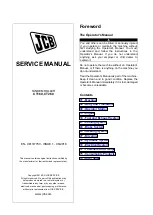
Measurement and instrumentation
Dual trace oscilloscope JO 20 MHz
Ref :
291166
ENGLISH
27
•
The level corresponding to the trace starting point is called "trigger
threshold".
•
Select:
o
either the falling edge position (30 down): in this case the
slope at the origin of the trace is negative,
o
or the rising edge position (30 released): in this case the
slope at the origin of the trace is positive.
Note 1:
the trigger threshold must be within the min and max signal values.
If these limits are exceeded, the trace will disappear from the
screen.
Note 2:
generally the lever (27) should be set on AUTO; this position
allows a trace to be always visible on the screen.
The NORM position (27) is used especially in the case of very low
frequency signals.
4.3 XY function
•
Using a function generator, feed the same signal into both
channels.
•
Set the range selectors (9) on the same position.
•
Set the knobs (10) on CAL.
•
Select the channels YA (15) and YB (16).
•
Record the signal amplitude.
•
Set the selector (20) on XY: now you will obtain a 45-deg. inclined
line segment representing the function: Y (channel B) = f(x)
(channel A). The same amplitudes as before are observed for X
and Y.
•
In this operating mode the INV button (14) is inoperative.
Note: Beware of screen damage due to burning in the case of a bright
stationary spot.
4.4 Calibration of attenuation probes (usually
1/10)
•
Connect the probe onto either channel YA or YB. (When the probe
is a switchable one, use the 1/10 position).
•
Contact the probe with the CAL terminal (6).
•
Set the selector (9) on 20 mV/div.
•
Set the selector (19) on 0.2 msec/div.
•
If necessary trim the probe setting so that a horizontal trace is
obtained.
Содержание JO 20
Страница 34: ......







































